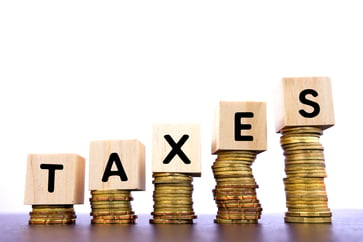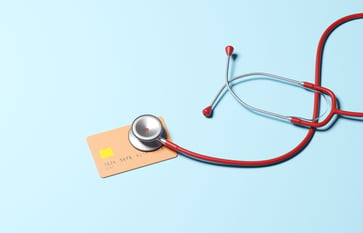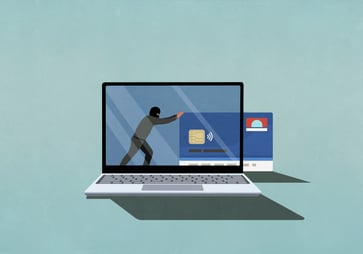What are the most common types of bankruptcy and what alternatives to consider?

If you've ever struggled with unpaid bills and increasing debt, you may have contemplated declaring bankruptcy.
Before you believe that bankruptcy will solve all your financial problems, be aware that it is a legal procedure with significant consequences on your finances. Here's a brief overview of the two most common types of bankruptcy for individuals, as well as some less severe alternatives to consider.
Common types of bankruptcy and alternatives
Find the best debt relief sources
Chapter 7 bankruptcy
One of the most common forms of bankruptcy filed by individuals is Chapter 7, which is intended for those who require a fresh start and have unpaid unsecured debts, such as credit cards, personal loans, and medical expenses.
Chapter 7 bankruptcy, formally known as "liquidation bankruptcy," involves liquidating non-essential assets to pay off creditors. These assets include second homes, expensive jewelry or art, luxury cars, and valuable collections. In return, the bankruptcy court will discharge most of your unsecured debts, relieving you of financial burden. However, certain debts, such as alimony and child support payments, taxes, and student loans, cannot be discharged.
Generally, the list of exempt assets that can be liquidated to creditors varies by state, but it typically includes.
- cars to a certain value
- equity in your home
- household items like clothes
- furniture and retirement accounts.
Completing the Chapter 7 bankruptcy process typically takes between three to six months. To determine eligibility, you must undergo a "means test," which evaluates your average monthly income compared to your state's median income for your family size. If your income is low enough, you may be eligible for Chapter 7, which involves having all of your debt erased. If you do not qualify for Chapter 7, you may still be eligible for Chapter 13 bankruptcy, which requires you to repay a portion of what you owe.
Filing for Chapter 7 bankruptcy may relieve you of debt, but it can also negatively impact your financial future. For up to a decade following the filing date, these bankruptcies will remain on your credit report, making it challenging to obtain loans and other forms of credit.
Chapter 13 bankruptcy
Chapter 13 bankruptcy, also known as "wage earner's bankruptcy" or "reorganization bankruptcy," is a form of consumer bankruptcy that offers a less extreme option for individuals who are behind on their debt payments but make a steady income. Unlike Chapter 7, which is a fresh start, Chapter 13 is seen as a soft landing.
Chapter 13 bankruptcy involves a court-mediated repayment plan between you and your creditors, allowing you to pay off some or all of your debt while keeping your assets. A court-appointed trustee will collect your debt payments and distribute them to creditors. If you comply with the repayment plan and meet other requirements, the bankruptcy court will typically discharge any qualifying debt remaining after the plan's completion. Exclusions include mortgage payments, alimony or child support, and certain taxes. The process usually takes between three to five years.
Filing for Chapter 13 bankruptcy can have a severe impact on your credit, with the negative mark remaining on your credit report for a full seven years from the date of filing.
Alternatives to bankruptcy
If bankruptcy is the best option for you, consult a bankruptcy attorney before making any moves. However, before turning to bankruptcy, consider alternative options like debt consolidation and debt settlement.
Debt consolidation loan
Consolidating multiple debts into one loan can help you manage your finances better and potentially lower your interest rate and monthly payments. The type of debt consolidation loan you qualify for depends on your credit score.
If you have no credit history, Upstart may be a suitable option for you as it allows those with no credit score to apply. Upstart evaluates your education history and work experience when reviewing your application for a debt consolidation loan.
If you have a credit profile, Achieve® can be a good option, but it's not so great. You can qualify with a FICO® Score as low as 620.
If you have good to excellent credit, LightStream may be a good option for debt consolidation, as they offer low interest rates and high borrowing limits based on your creditworthiness.
Debt settlement
Enlisting a third party to negotiate a lower payment amount with creditors is known as debt settlement. Although it may be an alternative to bankruptcy, be aware that debt settlement has its own potential drawbacks, including high fees, credit score damage, possible legal action, and no guarantee of relief.
If you want the best chance of settling your debt, consider using Americor®, which promises to refund any fees if they don't reduce your total enrolled debt. Alternatively, Freedom Debt Relief offers assistance even for those with smaller debt amounts under $10,000.
Why trust CNBC Select?
Our mission at CNBC Select is to deliver top-notch service journalism and in-depth consumer advice to our readers, enabling them to make informed decisions with their money. Each bankruptcy article is the result of thorough reporting by our team of expert writers and editors, who possess extensive knowledge of debt relief products. While CNBC Select earns a commission from affiliate partners on many offers and links, we create all our content independently, without any input from our commercial team or external third parties. We uphold the highest journalistic standards and ethics.
Stay up to date with CNBC Select's comprehensive coverage of credit cards, banking, and money by following us on TikTok, Facebook, Instagram, and Twitter.
Select
You might also like
- An accessible credit card that earns rewards: A review of the Firstcard Secured Credit Builder Card with Cashback.
- In 2027, American Express will launch a Centurion Lounge at Boston Logan Airport.
- Are online banks less safe than traditional banks?
- Navy Federal Credit Union mortgage review 2025: A comprehensive analysis of their mortgage products and services.
- Review of pet insurance in 2025



















